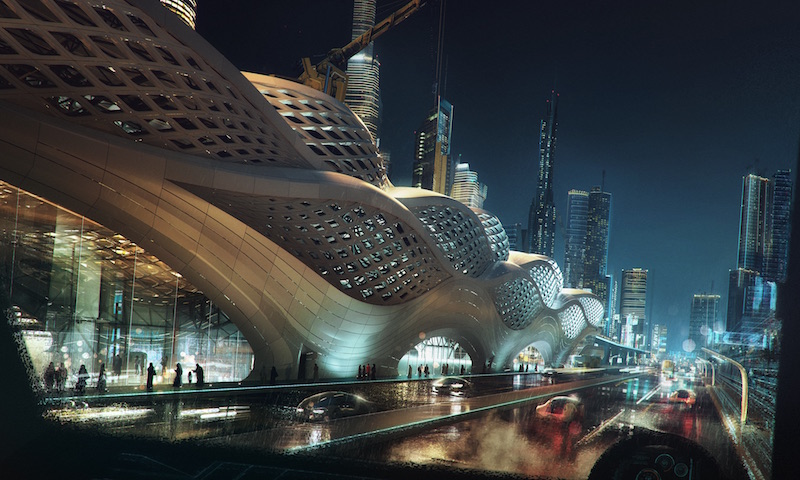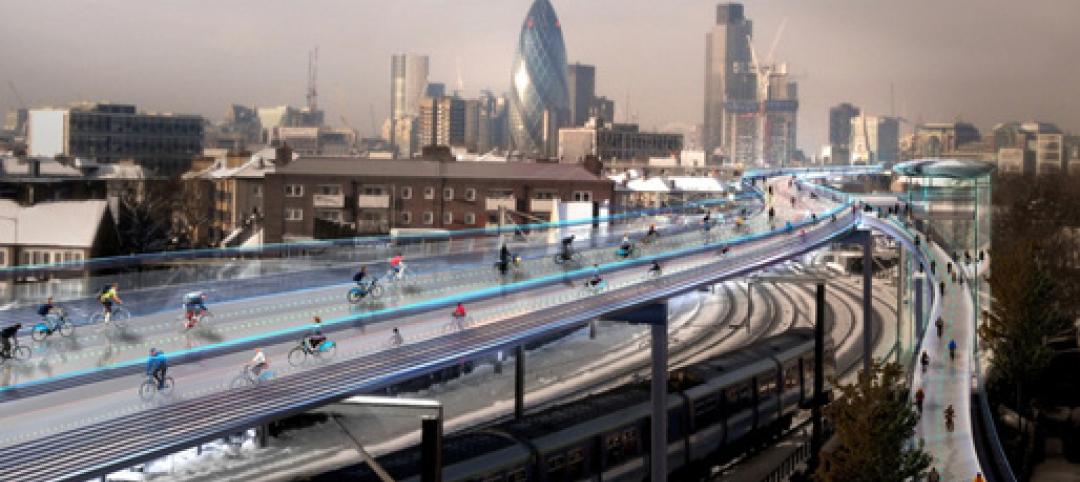Designed by Zaha Hadid Architects, the new King Abdullah Financial District (KAFD) Metro Station in Riyadh, Saudi Arabia will serve as a key interchange on the new Riyadh Metro network for Line 1 and the terminus of Line 4 and Line 6.
The 45,000-sm complex will include four above ground levels and two below ground (car parking) and will be integrated within the urban context of the financial district. The most striking feature of the new metro station is the façade, meant to represent patterns generated by desert winds.
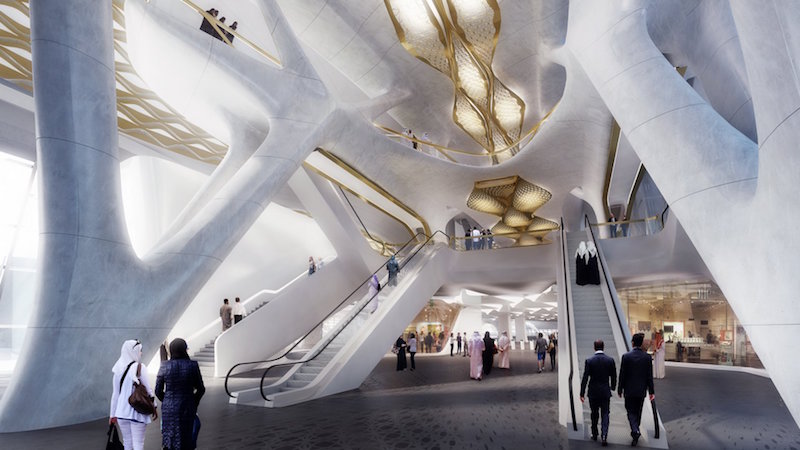 Courtesy ZHA.
Courtesy ZHA.
The façade is design-engineered by Newtecnic to reduce solar gain and produce air currents that help cool the building. The firm’s research team had to develop new algorithms to achieve this level of performance. Additionally, Newtecnic had to invent new adjustable building components and fixing methods for the structure’s self-supporting, 650-foot-long concrete-composite walls and roof.
The result of this world-first-façade and the new techniques used to create it is an undulating, futuristic building that will be delivered for the price of a more traditional structure and last twice as long.
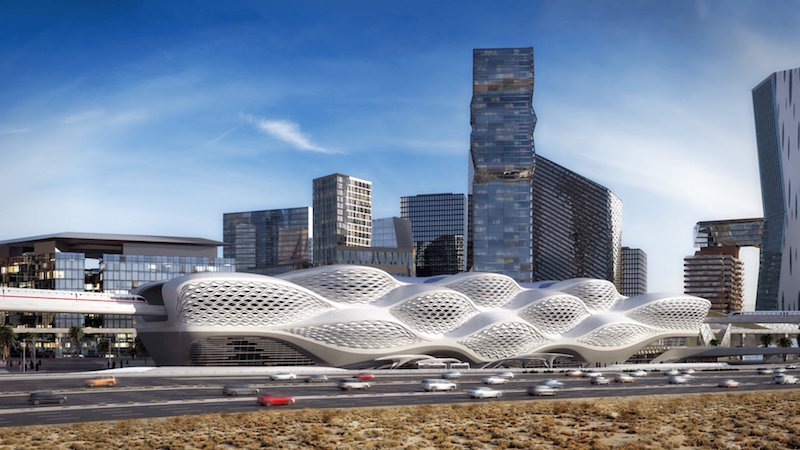 Courtesy ZHA.
Courtesy ZHA.
The KAFD Metro Hub is designed to support Riyadh’s expected 50% growth over the coming years and is part of a new citywide transport system that comprises six metro line, 85 stations, and more than 100 miles of track.
BACS Consortium is the general contractor for the project, which is slated for completion in 2018.
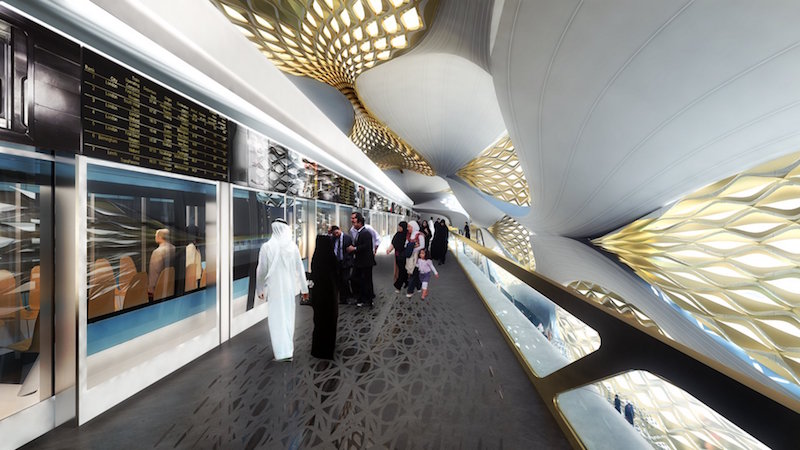 Courtesy ZHA.
Courtesy ZHA.
Related Stories
Smart Buildings | Jan 7, 2014
9 mega redevelopments poised to transform the urban landscape
Slowed by the recession—and often by protracted negotiations—some big redevelopment plans are now moving ahead. Here’s a sampling of nine major mixed-use projects throughout the country.
| Jan 6, 2014
What is value engineering?
If you had to define value engineering in a single word, you might boil it down to "efficiency." That would be one word, but it wouldn’t be accurate.
| Jan 3, 2014
Norman Foster proposes elevated bikeways throughout London
Called SkyCycle, the plan calls for the construction of wide, car-free decks atop the city's existing railway corridors.
| Dec 13, 2013
Safe and sound: 10 solutions for fire and life safety
From a dual fire-CO detector to an aspiration-sensing fire alarm, BD+C editors present a roundup of new fire and life safety products and technologies.
| Dec 10, 2013
16 great solutions for architects, engineers, and contractors
From a crowd-funded smart shovel to a why-didn’t-someone-do-this-sooner scheme for managing traffic in public restrooms, these ideas are noteworthy for creative problem-solving. Here are some of the most intriguing innovations the BD+C community has brought to our attention this year.
| Nov 27, 2013
Wonder walls: 13 choices for the building envelope
BD+C editors present a roundup of the latest technologies and applications in exterior wall systems, from a tapered metal wall installation in Oklahoma to a textured precast concrete solution in North Carolina.
| Nov 26, 2013
Construction costs rise for 22nd straight month in November
Construction costs in North America rose for the 22nd consecutive month in November as labor costs continued to increase, amid growing industry concern over the tight availability of skilled workers.
| Nov 25, 2013
Building Teams need to help owners avoid 'operational stray'
"Operational stray" occurs when a building’s MEP systems don’t work the way they should. Even the most well-designed and constructed building can stray from perfection—and that can cost the owner a ton in unnecessary utility costs. But help is on the way.
| Oct 30, 2013
11 hot BIM/VDC topics for 2013
If you like to geek out on building information modeling and virtual design and construction, you should enjoy this overview of the top BIM/VDC topics.
| Oct 18, 2013
Researchers discover tension-fusing properties of metal
When a group of MIT researchers recently discovered that stress can cause metal alloy to fuse rather than break apart, they assumed it must be a mistake. It wasn't. The surprising finding could lead to self-healing materials that repair early damage before it has a chance to spread.


